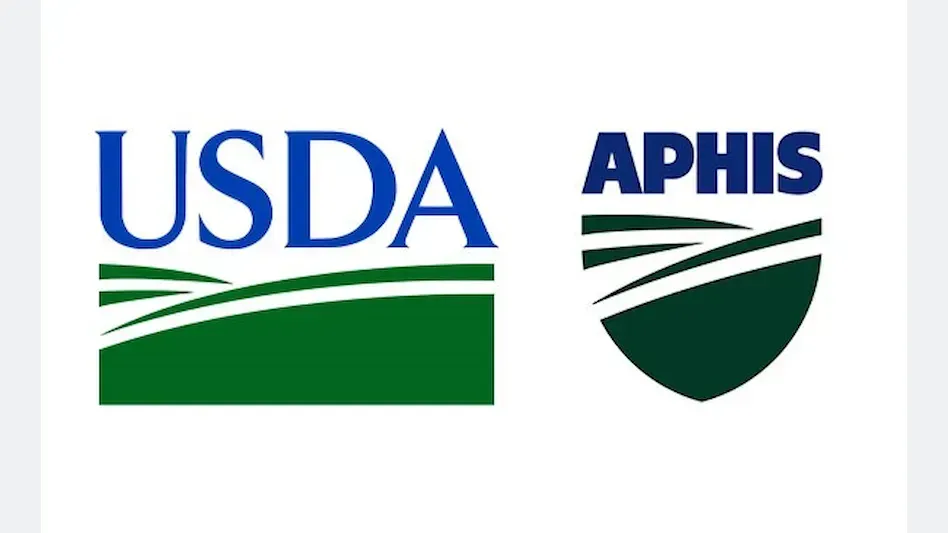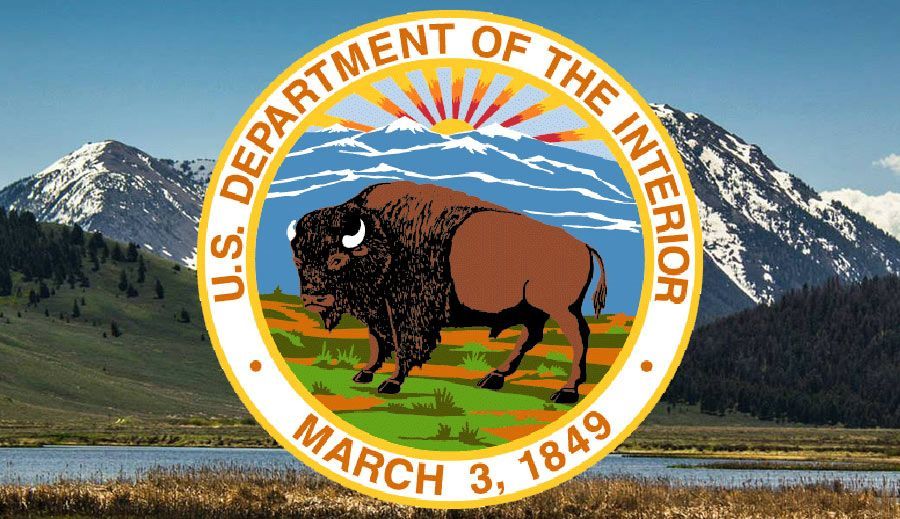US Forest Service asks the public for Environmental concerns about new management practices, and By and for the People respond

This was the first 90-day public comment that I have ever seen. However, I still left it until the last moment, and I regret leaving some critical information out of the comment. Note that this is my second submission, as US Forest asked me to submit an early response as they had never heard of this technology or agenda. So, I am sure they are having a great time unraveling the wickedly deceptive agenda.
I hope they will include biotechnology in their environmental impact statement!
The link is to our posted comment and attachments on the US Forest Service website. > https://cara.fs2c.usda.gov/Public/Letter/4589561?project=65356
RE; Land Management Plan Direction for Old-Growth Forest Conditions Across the National Forest System #65356
project landing page, https://www.fs.usda.gov/project/?project=65356
September 20th 2024
To whom it may concern and the public,
I am incredibly concerned about the public commenting process's lack of truth and transparency. This comment will show how multiple federal agencies will invite the world's “scientists” to do “high risk, high reward” experiments in our public lands and thus far without performing Environmental Impact Statements on new biotechnology techniques that USDA APHIS, FDA, and EPA are currently deregulating by the command of Executive Orders.
In my reply, I will often refer to the June 28th, 2024, US Forest Service public webinar, “20240628 - National Old Growth Forest Public Event” https://usda-fs.wistia.com/medias/ij1c5f2w18 . I attended this online webinar; I submitted questions regarding the use of biotechnology. I was told that biotechnology was not part of this project, and my questions are not shown on the video recording... I will refer to this meeting multiple times in my response and show why this meeting should have fostered conversation on the topic and how the US Forest ultimately needs to evaluate biotechnology in your Environmental impact assessment.
The “June 28th public event” at time 3:59 states that multiple executive orders drive land managers to make management changes to address climate change. I will highlight Executive Orders that secretly push biotechnology efforts. E.O 14072 contains some notable text that means biotechnology but is not labeled biotechnology.
“It is the policy of my Administration, in consultation with State, local, Tribal, and territorial governments, as well as the private sector, nonprofit organizations, labor unions, and the scientific community, to pursue science-based, sustainable forest and land management; conserve America’s mature and old-growth forests on Federal lands; invest in forest health and restoration; support indigenous traditional ecological knowledge and cultural and subsistence practices; honor Tribal treaty rights;
, waters, wildlife, and communities in the face of increasing disturbances and chronic stress arising from climate impacts.”
Let's look at some of the other E.O.s quietly driving agencies' decisions on biotechnology.
Executive Order (EO) 14081- Advancing Biotechnology and Biomanufacturing Innovation for a Sustainable, Safe, and Secure American Bioeconomy”
Note that there is no mention of the Forest Service management requests in EO 14081. However, the follow-up report that is requested in the E.O briefly shows the true intent of biotechnology use in a report called,
“Bold Goals for U.S. Biotechnology and Biomanufacturing:”
and deploy climate-smart forestry practices and other
nature-based solutions to improve the resilience of our lands
“R&D Needs • Develop genetic engineering and technology tools for high yield crops and forest trees with deeper and more recalcitrant root systems to increase SOC. (Goal 4.1)”
These E.O report recommendations have led to the telling details of the USDA 2023-2026 strategic plan (pdf attached) https://www.usda.gov/sites/default/files/documents/usda-science-research-strategy.pdf
“Develop genome engineering, genetic technology, and other technological tools to deliver high yield crops”
And – Priority 4, Cultivating Resilient Ecosystems;
“Key Strategies: Genetically characterize plants and animals within the USDA’s National Genetic Resources Program to better identify and catalog traits that enable future generations to adapt to climate
One must understand that USDA APHIS recently had a “public commenting period” for the “Proposed Exemptions: Movement of Organisms Modified or Produced through Genetic Engineering.” - https://www.regulations.gov/document/APHIS-2023-0022-0001 and this USDA APHIS 2023 Stakeholders Meeting, time 35:20'ish in this video; https://www.youtube.com/watch?v=AuNGzNxts28 are only two places to reference the details of the biotechnology/genetic engineering "science" being proposed for exemption. Neither APHIS nor I publicly know of any other news on this subject!
*These APHIS "proposed Exemptions" will not be decided until December 2024.
Here is more supplemental information from the USDA APHIS 2023 strategic foresight report that is relatively transparent. https://www.aphis.usda.gov/sites/default/files/aphis-strategic-foresight.pdf
Let's examine US Fish and Wildlife Services’ new significant biotechnology role that started with this recap regulatory request.>https://www.fws.gov/project/endangered-species-act- regulation-revisions
“On June 4, 2021, the U.S. Fish and Wildlife Service (FWS) and the National Oceanic and Atmospheric Administration's National Marine Fisheries Service (NMFS), together the "Services," announced a plan to improve and strengthen implementation of the Endangered Species Act (ESA). The plan includes a set of proposed actions that follow Executive Order 13990 (Protecting Public Health and the Environment and Restoring Science To Tackle the Climate Crisis) and will ensure the ESA effectively addresses 21st-century conservation challenges, such as climate change .”
On a side-note, clicking the FWS “climate change” link will take you to what I call Reverse-
forest trees for rapid adaption to extreme environmental stresses (e.g., drought)
and biological threats.
change and to implement innovative solutions that improve sustainability.
Develop plant regeneration methods, such as recovering viable plants from single cells or plant
organs; for example, for specialty crops or rare/endangered species that have the potential to
benefit from genome editing tools.
Devise more effective genomic methods to identify and
predict desired genetic changes that enable breeders to deliver specific phenotypes to sustainably
meet economic, environmental and societal needs”
engineering of a solution... without mentioning the true biotechnology processes involved to reach these goals.
https://www.fws.gov/glossary/climate-change Copy/paste from website-
“Climate change presents a growing threat to the nation’s fish, wildlife, plants and their habitats in profound ways. Due to the effects of climate change, some populations may decline, many will shift their ranges substantially, and still others will face increased risk of extinction. Some species will survive in the wild only through direct and continuous intervention by wildlife and fisheries managers.
The challenge of conserving wildlife and ecosystems in the age of climate change will requires the U.S. Fish and Wildlife Service and partners to apply the skill, determination, creativity, and commitment to conserving the nation’s natural resources that have defined the American conservation movement since its inception more than 160 years ago.
It is within our power to slow and manage for its effects;
There are two primary ways the U.S. Fish and Wildlife Service is responding to climate change: adaptation and mitigation. The Service is focused on helping fish, plants, and wildlife adjust to the impacts of climate change, as well as moderating the effects of a changing climate using cutting-edge science in conservation, land and species management, and habitat restoration. Adaptation involves adapting and adjusting to the ongoing effects of climate change. This includes planned, science-based management actions that we take to help reduce the impacts of climate change on fish, wildlife, plants, and their habitats.
Adaptation forms the core of the Service’s response to climate change and is the centerpiece of our Strategic Plan. This adaptive response to climate change will involve:
• Strategic conservation of wildlife habitats within sustainable landscapes.
• Conserving the most climate-vulnerable species through various activities, including but not limited to identifying priority water needs, addressing habitat fragmentation, managing genetic resources, reducing non-climate stressors, and other resource management actions.
• Informing stakeholders on conservation issues related to energy development and energy policy and help facilitate development of renewable energy sources in a manner that helps conserve species and avoids or minimizes significant impacts to sensitive fish, wildlife, and plant species. Mitigation refers to reducing emissions and stabilizing the levels of heat-trapping greenhouse gases in the atmosphere. Mitigation efforts can be as large as a national strategy to reduce greenhouse gas emissions, or they can be as small as a habitat restoration project in your back yard. Mitigation can including reducing our “carbon footprint” by using less energy, consuming fewer materials, and altering our land management practices.
Mitigation is also achieved through biological carbon sequestration, the process in which carbon dioxide from the atmosphere is taken up by plants through photosynthesis and stored as carbon. Sequestering carbon in vegetation such as forests or native prairie grasses can often restore or improve habitat and directly benefit other plants as well as fish and wildlife - and, in many cases, efforts to restore or conserve these ecosystems have cascading effects such as cleaner water, better resilience to wildfire, flooding, and storms, and natural habitats for wildlife and people to enjoy.
The Service is committed to mitigating the effects of climate change by:
• Developing expertise in biological carbon sequestration — sequestering greenhouse gases in plant biomass, while also creating or restoring priority native plants, fish and wildlife habitats — and foster efforts to sequester carbon on lands it manages.
Facilitating habitat conservation through carbon sequestration at the international level. By
working with international partners and stakeholders to help reduce deforestation rates in key areas, such as tropical forests, the Service will help preserve areas critical to biodiversity conservation and support greenhouse gas mitigation.”
This is the Landing page to the ESA landing page; This “program” - Endangered Species
https://www.fws.gov/program/endangered-species
“Our Services- To make recovery efforts for listed and candidate species more efficient and effective, we work with others to find ways to invigorate and modernize the implementation of the ESA, using our current conservation tools and developing new ones at every opportunity. Among the tools that play a major part in achieving our conservation and recovery goals are: interagency consultations; incentives for landowners and managers to engage in voluntary conservation partnerships; grants to states and territories, private landowners, and conservation groups to fund conservation projects; and permits that authorize scientific research to learn more about listed species, or activities that enhance the propagation or survival of listed species.”
Genetic engineering will likely be the normal for Endangered Species, like the cloning of the black-footed ferret. (not released into nature yet. But look into the California condor) https://www.fws.gov/press-release/2024-04/innovative-cloning-advancements-black-footed- ferret-conservation
To understand the new rules of the E.S.A, This educational video does a good job of quickly overviewing HPCs (Habitat Conservation Plans), and ITPs (Incidental Take Permits), shows how the "applicant" can be "anonymous" and how they are issued by "consulting with self" and are not liable for their actions if "unintended consequence" arises and the "no surprise clause." is extremely reckless. Category exclusions (C.Es) are how biotechnology will be categorized and used. Please watch 1:07:48 to 1:15:00
https://www.youtube.com/watch?v=6f9npmO-fCM
These E.O.s results are in coordination with the July 1st, 2024 implementation of the recently revised NEPA Act, which seems to exclude public participation in “science”-based processes and mandate the use of “science-based solutions” in all possible ways. See CEQ phase 2 (final rule) landing page, May 2024 (a lot of insightful information) https://ceq.doe.gov/laws-regulations/regulations.html to link>; Federal registry notice (Long read- however, CEQ conversates on how they determine that “science” supper cedes public opinion. There are other concerns like requiring FOIAs for the public to review EIS, Making public meetings “discretionary,” and a bunch of words that are changed from “shall” to “May” regarding public involvement and allowing NGOs / Applicants to prepare EAs or EIS consistent with agency procedure.
Also see Q&A on FDA Regulation of Intentional Genomic Alterations in Animals
https://www.fda.gov/animal-veterinary/intentional-genomic-alterations-igas-animals/qa-fda- regulation-intentional-genomic-alterations-animals
“Q: How does FDA address potential environmental risks associated with IGAs in animals? Are concerns different for different kinds of animals?
A: Any potential environmental issues would be a function of the traits introduced into those animals and the conditions under which those animals would be raised. For example, a biopharm animal intended to be kept in a contained environment poses a different set of risks from an animal with an IGA that is intended to be released into the environment. FDA will consider potential environmental effects on a case-by-case basis as required by the National Environmental Policy Act. In general, we recommend that
early in development developers consult FDA about potential environmental issues and that they consult with FDA prior to developing their approaches to environmental assessments so that we can agree on the risk questions to be addressed and the resulting scope of the environmental review.”
June 20, 2024 EPA Publishes its 2024-2027 Climate Adaptation Plan.
https://www.epa.gov/newsreleases/epa-publishes-its-2024-2027-climate-adaptation- plan-0
I am requesting a specific analysis of biotechnology and its possible effects on our biosphere in the environmental impact statement.
I would like to request a follow-up public meeting on this biotechnology topic being used in the Forest Service and be invited to it. The meeting should include assessments that should be included in the next DEIS to address and fully disclose the proposed amendment's potential effects.
the US Forest Service should focus on addressing the annual amassing of biomass in the national forests that drive wildfire behavior. Chris French, deputy chief of national forest systems, said in the 6/28 public meeting, at 7:12 in the video, that “By thinning trees, removing live fuels and deadwood, and taking other preventive steps, the Forest Service can help to minimize the consequences of wildfires.”
I see nature as a sacred biosphere that Man should NOT be allowed to manipulate but instead nurture within its natural genetic boundaries... and I believe that most of the community would agree with this if it were presented and not concealed.
Please don’t forget your role is to serve the interests of all Americans, not special interests. Josh Wilson
By and for the people
byandforthepeople.org










